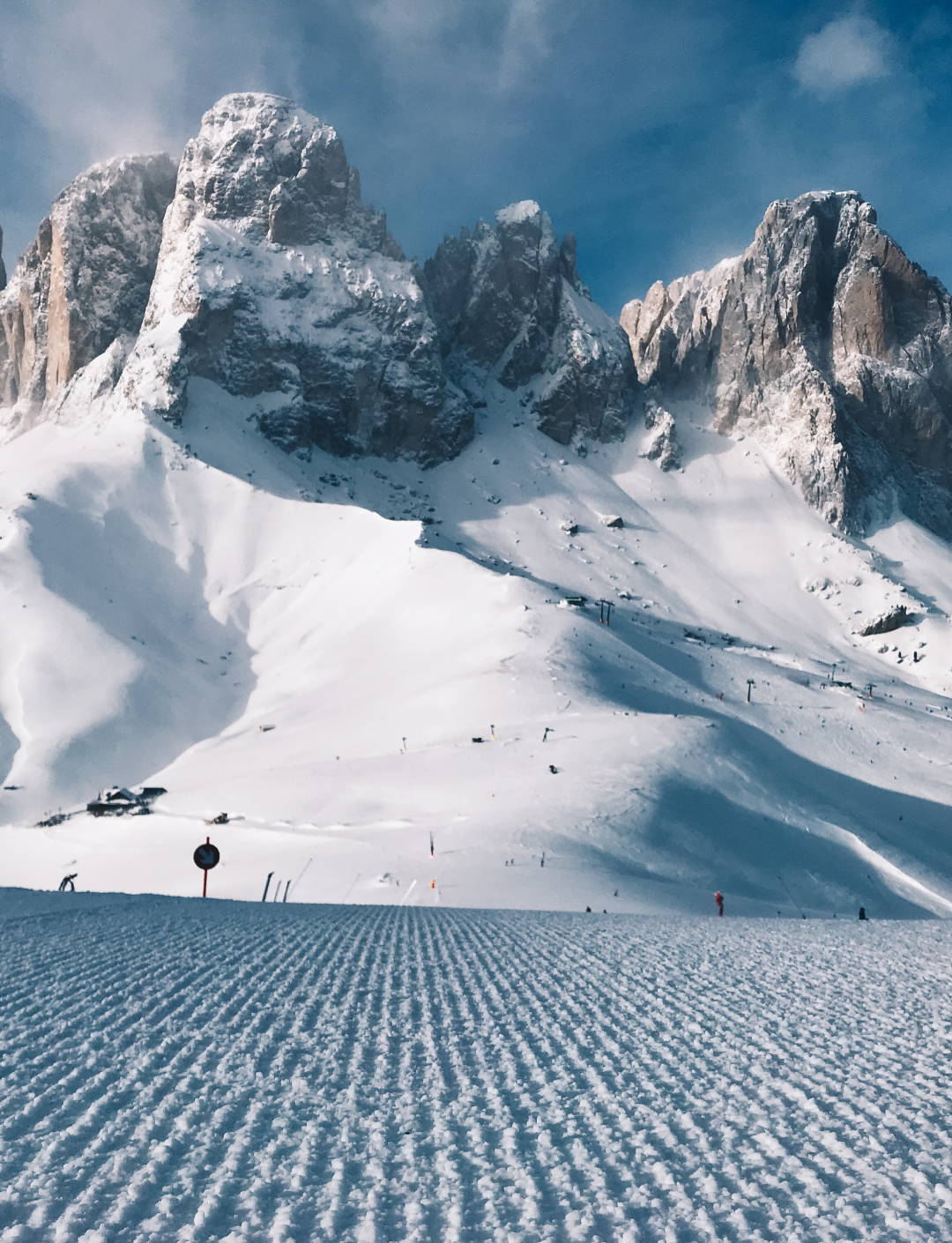As skiers and snowboarders, at one point in time we've probably had an unpleasant encounter with a fellow rider on the slopes. Maybe we've been cut off, encountered a traffic jam midway down, or been shoved out of the way by someone trying to meet up with their buddy who's ahead of you in the lift line. The bottom line? When we're skiing or snowboarding we're also sharing the mountain with a ton of other people.
In order for everyone to have a safe and rewarding experience on the slopes, we need to be respectful and observe certain standards of etiquette. Here are some tips for skiing and snowboarding with proper “shred-iquette”. While we're going to delve a bit further into these concepts and add a few of our own, here's a link to the
Skier’s Responsibility Code, published by the National Ski Areas Association (NSAA) and the National Ski Patrol (NSP).

Image: Leaf Peterson, Flickr
1) Understand Right of Way
This is a big one some people ski or snowboard faster than others, which makes passing a common concern, similar to when you're driving. However, unlike when you're driving, when you're skiing you don't have mirrors with which to see behind you. This concedes to the rule that skiers and snowboarders in front of you always have the right of way. If you're coming up behind someone, it's your responsibility to avoid them.
2) Merge with Caution
The only time the first rule doesn't apply is when you're merging onto a new trail. In this case, you need to look uphill and yield to others headed down in your direction. Once you're moving along in your space down the slope, then again you have the right of way and skiers and snowboarders behind you need to yield.
3) Stop with Consideration
It happens — your scarf flops loose, you need to take off a layer, or perhaps you're having an equipment malfunction. At some point in time, you'll need to make a pit stop midway down a run. When this happens, make sure you pull off to the side, but remain in an area where you can be seen. You dont want someone to accidentally run into you — especially if an unsuspecting comrade decided to take the path less traveled.
4) Observe Posted Signs and Trail Closings
This one should be pretty self-explanatory. If an area is closed off, it's likely for a reason — such as a trail hazard, poor conditions, or perhaps construction. Observe 'slow' signs, as they're meant to mitigate potential merging collisions. The worse thing that could happen while skiing is that you get injured — especially if you're in a restricted area, which could compound with trouble from the resort.
5) Don't Take Ski Lifts Lightly
Ski lifts are there for your benefit and meant for one purpose: to assist you in getting up the mountain so that you can have as much fun as possible riding back down. Accidents happen on lifts but they can be reduced by all riders first having the basic knowledge of how to load and unload, ride with others, and keep gear to yourself while you're in the air. To keep lift lines moving efficiently, don't be afraid to ride with strangers and if your skiing companions end up behind or in front of you in line, just plan on meeting up with them at the top of the hill instead of creating a traffic jam.
6) Knowledge is Power
You can't learn to ski without practicing — but it's definitely to your benefit to remain in control while you're skiing at all times. Take a lesson or two before you head out on your own and stick to the slopes that suit your experience level. It's okay to push yourself — but make sure you're ready so you don't get in over your head and inadvertently endanger yourself or others around you. You're bound to wipe out once in a while so just be respectful and get out of the way as quickly as you can. On the same note, if you're a more advanced skier, watch out for beginners. Lend a hand when you can and if someone's in trouble, stop and offer your assistance.
7) Effectively Use Your Ski Gear
Your gear was designed to prevent 'runaway' incidents. Most modern alpine skis have brakes built in and there are loops around your poles that are meant to prevent your poles from rolling down the hill in the wake of a wipeout. It's okay if all your gear accidentally goes flying — there's hopefully a considerate skier who will come up behind you and help you gather your things, but do your best to prevent runaway equipment. Also, your grandfather's hand-me-down skis might have been fabulous a decade ago, but make sure you're using up to date equipment with modern safety features. UtahSkis has a ton of equipment you can pick up for a super reasonable price.


 Image: Leaf Peterson, Flickr
Image: Leaf Peterson, Flickr





